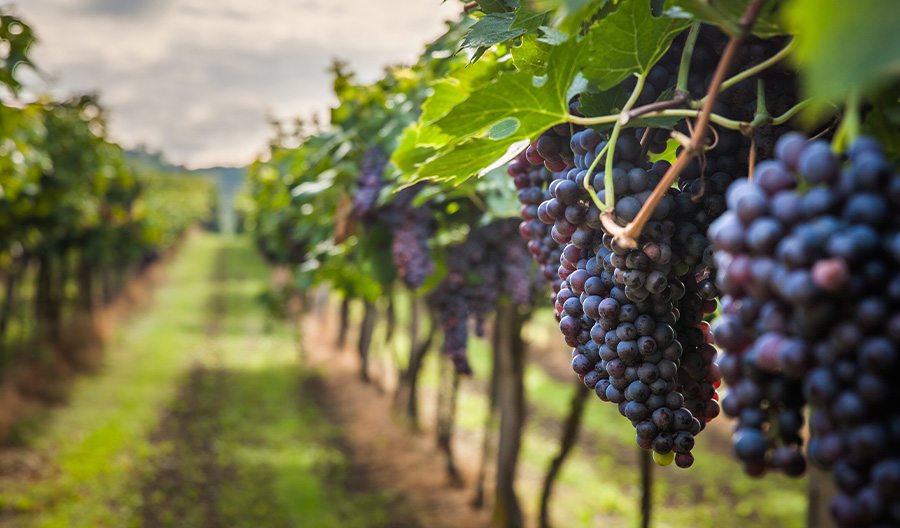Amarone wine has a rich history that dates back to ancient Roman times. It originates from the Veneto region in northeastern Italy, specifically in the Valpolicella area. The Romans were known to produce sweet wine in this region, which is believed to be the precursor to the modern Amarone.
The term 'Amarone' was first used in the 18th century and it translates to 'the Great Bitter'. This was to distinguish it from the sweet Recioto produced in the same region. The production of Amarone was initially a mistake, when a batch of Recioto was left to ferment for too long, resulting in a strong, dry wine.
Despite its accidental discovery, Amarone was not commercially produced until the 1950s. The winemakers of the region realized the potential of this robust, flavorful wine and began to refine the production process. The traditional method of producing Amarone involves drying the grapes on straw mats in the cool, dry autumn air to concentrate the flavors.
Over the decades, Amarone has gained international recognition for its unique production process and its intense, full-bodied flavor. The wine is typically aged for a minimum of two years, but many producers age it for longer to further enhance its complexity and depth.
Today, Amarone is considered one of Italy's most prestigious red wines. It is produced by a small number of wineries in the Valpolicella region, each with its own unique interpretation of this historic wine. Despite its relatively recent commercial production, Amarone carries with it centuries of winemaking tradition and history.
Statistics about Amarone
Typically aged for 2-5 years before it's released.
Amarone della Valpolicella Classico, a specific type of Amarone wine, must be aged for at least 2 years.
Reserve Amarone wines require a minimum of 4 years of aging.
Amarone wine typically has an alcohol content of 15-16%, but can reach up to 20%.
The production of Amarone wine involves a unique process called appassimento, where grapes are dried for 120 days before fermentation.
The Corvina grape, which makes up 45-95% of the blend in Amarone wine, is known for its thick skin and low yield.
Rondinella and Molinara are other grape varieties used in Amarone wine, making up 5-30% and 5-25% of the blend respectively.
Production of Amarone wine is concentrated in the Veneto region of Italy, specifically in the Valpolicella area.
Annual production of Amarone wine is around 8.5 million bottles.\Amarone wine is one of the most expensive Italian wines, with prices ranging from $50 to over $500 per bottle.

What are the distinctive tasting notes of Amarone wine?
Amarone wine is known for its robust and full-bodied character, which is a result of the unique appassimento process it undergoes. This process involves drying the grapes before fermentation, which concentrates the flavors and increases the sugar content, resulting in a rich and intense wine.
The first sip of Amarone often reveals a complex blend of flavors. Dark fruit notes such as black cherry, plum, and raisin are prominent, offering a sweet yet balanced taste. These fruity notes are often accompanied by a hint of spice, adding a layer of complexity to the wine.
Another distinctive feature of Amarone's taste profile is its earthy undertones. These can range from tobacco to dark chocolate, and even leather, providing a deep, grounded flavor that contrasts beautifully with its fruity sweetness.
Despite its richness, Amarone maintains a certain elegance, with a velvety texture that is incredibly pleasing to the palate. The finish is typically long and persistent, with a warm, almost liqueur-like quality.
Finally, Amarone wines are known for their high alcohol content, often reaching up to 15-16%. This gives the wine a strong, bold flavor, but it's well-integrated and doesn't overpower the other tasting notes. Instead, it adds to the overall complexity and depth of the wine.
What food pairings work best with Amarone wine?
Amarone wine, with its full-bodied, rich, and intense flavor profile, pairs exceptionally well with hearty dishes. Its high alcohol content and robust character make it an excellent companion to red meats, particularly those that are grilled or roasted. Think along the lines of a succulent steak, a rack of lamb, or a hearty beef stew.
Game meats also pair beautifully with Amarone. The wine's bold flavors can stand up to the strong, distinctive taste of meats like venison, wild boar, or duck. It can also complement the richness of dishes like osso buco or braised short ribs.
Cheese is another food category that pairs well with Amarone. Strong, aged cheeses like Parmigiano-Reggiano, Gorgonzola, or Pecorino can balance the wine's high tannins and acidity. The saltiness of the cheese can also help to highlight the wine's fruity notes.
Rich, tomato-based pasta dishes can also be a good match for Amarone. The acidity in the tomatoes can help to balance the wine's robustness, while the richness of the sauce can complement its full-bodied nature.
These wines can also be enjoyed with dark chocolate or rich, chocolate-based desserts. The bitterness of the chocolate can help to balance the sweetness of the wine, while the richness of both can create a harmonious pairing. However, this should be done sparingly as Amarone is not typically considered a dessert wine.

